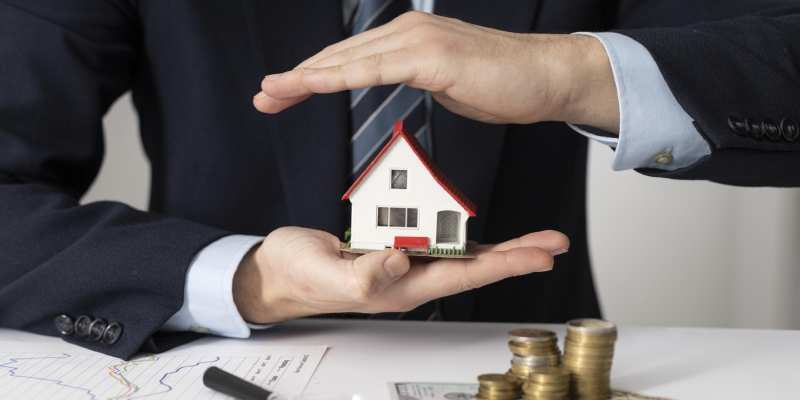Building a new house is an exhilarating journey filled with dreams and aspirations. However, amidst the excitement, it’s crucial to tread carefully to avoid stumbling upon common pitfalls that can turn your dream home project into a nightmare. In this article, we will delve into the 8 common mistakes to Avoid While Building a New House In 2024 that can derail your project and spoil your dream.
8 Common Mistakes to Avoid While Building a New House In 2024
Let’s explore the 8 common mistakes to avoid while building a new house in 2024:
Planning Phase Mistakes
When it comes to planning, it’s crucial to get it right from the start. Inadequate planning can lead to costly mistakes in the construction process.
Lack of a Detailed Plan
The cornerstone of any successful endeavour lies in meticulous planning. Yet, many aspiring homeowners falter at this crucial stage, plunging headfirst into the project without a roadmap to guide them.
Inadequate Research
Research forms the bedrock upon which your project stands. It’s imperative to delve deep into various aspects, from the locality and market trends to the nitty-gritty of materials and processes involved.
Poor Budgeting
A robust budget is not merely a list of expenses; it’s a comprehensive blueprint that accounts for every conceivable cost. Underestimating expenses or failing to anticipate unforeseen financial burdens can spell disaster for your project.
Design Phase Mistakes

Moving on to the design phase, it’s essential to consider your future needs and make the most of your space. Overlooking these factors can compromise the functionality and comfort of your home.
Ignoring Future Needs
A home is not just a structure; it’s a sanctuary that should evolve with your family’s needs over time. Neglecting to factor in future requirements can lead to regrets down the line.
Not Considering Family Growth
Life is dynamic, and so are your family’s needs. Failing to plan for future expansions or lifestyle changes can leave you scrambling to adapt your home to accommodate these shifts.
Overlooking Accessibility
As you lay the foundation for your new abode, remember that accessibility is key to ensuring comfort and convenience for all occupants, regardless of age or mobility.
Poor Space Utilization
In the intricate dance of design, the efficient utilization of space is paramount to creating a harmonious living environment.
Inefficient Layouts
A well-designed layout can transform even a modest space into a haven of comfort and functionality. Pay close attention to the flow between rooms and optimize the layout to enhance livability.
Neglecting Storage Space
In the pursuit of aesthetics, the practical aspect of storage often takes a backseat. However, ample storage solutions are essential to maintaining an organized and clutter-free home.
Legal and Regulatory Mistakes
Now, let’s talk about the legal and regulatory aspects. Skipping permits and disregarding building codes can result in legal troubles and project delays.
Skipping Permits and Inspections
Navigating the legal landscape is a crucial aspect of the construction process, yet many homeowners falter in this area, either out of ignorance or negligence.
Understanding Zoning Laws
Zoning laws dictate what you can build and where you can build it. Ignoring these regulations can lead to costly legal battles and even the demolition of your dream home.
Importance of Building Codes
Building codes exist to ensure the safety and structural integrity of buildings. Disregarding these codes can compromise the safety of your home and put your investment at risk.
Construction Phase Mistakes
Transitioning to the construction phase, it’s vital to choose the right contractor and invest in quality materials. Making the wrong choices here can affect both the quality and timeline of your project.
Hiring the Wrong Contractor
Your choice of contractor can make or break your project. Entrusting your dream home to the wrong hands can result in shoddy workmanship and endless headaches.
Lack of Background Checks
Before signing on the dotted line, delve into the contractor’s background, verifying credentials, and scrutinizing past projects to gauge their competence and reliability.
Ignoring References and Reviews
Word of mouth speaks volumes when it comes to assessing a contractor’s reputation. Reach out to past clients and scour online reviews to gain insights into their professionalism and work ethic.
Poor Quality Materials
Cutting corners on materials may seem like a cost-saving measure in the short term, but it often leads to exorbitant expenses down the road.
Short-Term vs. Long-Term Costs
While opting for cheaper materials may seem economical initially, it’s essential to consider the long-term implications. Investing in quality materials not only ensures durability but also enhances the overall aesthetics and functionality of your home.
Environmental Considerations
In an era of heightened environmental awareness, incorporating eco-friendly materials into your construction not only reduces your carbon footprint but also contributes to long-term sustainability. From energy-efficient insulation to recycled building materials, there are myriad options available to minimize your home’s environmental impact.
Financial Mistakes
Delving into the financial side, it’s easy to get carried away and overspend. Overextending your budget and overlooking hidden costs can put a strain on your finances during construction.
Overextending Your Budget
The allure of luxurious upgrades and extravagant finishes often tempts homeowners to stretch their budgets beyond reasonable limits. However, it’s crucial to strike a balance between aspiration and affordability to avoid financial strain and regret.
Hidden Costs
Beyond the obvious expenses of construction, there lurk hidden costs waiting to ambush unsuspecting homeowners. Permit fees, landscaping, and unforeseen structural issues are just a few examples of expenses that can wreak havoc on your budget if overlooked.
Emergency Funds
In the unpredictable realm of construction, it’s prudent to set aside a contingency fund to cushion against unforeseen emergencies. From unexpected delays to last-minute design changes, having a financial safety net can provide peace of mind amidst the chaos.
Communication Mistakes
Communication is key throughout the entire process. Inadequate communication with contractors and stakeholders can lead to misunderstandings and delays.
Inadequate Communication with Contractors
Effective communication lays the foundation for a successful collaboration between homeowner and contractor. Regular updates and clear expectations foster transparency and minimize misunderstandings.
Regular Updates
Establishing a line of communication with your contractor ensures you’re kept abreast of progress, setbacks, and any deviations from the original plan. This open dialogue allows for timely intervention and course correction, averting potential disasters.
Clear Expectations
From project timelines to design preferences, articulating your expectations upfront helps align the contractor’s vision with your own. Clarity breeds confidence and fosters a collaborative spirit essential for achieving mutual goals.
Not Involving All Stakeholders
Building a home is a family affair, and neglecting to involve all stakeholders can lead to discord and dissatisfaction down the line.
Family Input
Each member of the family brings unique insights and preferences to the table. Soliciting their input not only fosters a sense of ownership but also ensures that the final design reflects the collective vision of the entire family.
Professional Advice
While family input is invaluable, it’s equally essential to seek guidance from seasoned professionals. Architects, interior designers, and real estate experts can offer invaluable insights and recommendations based on their expertise and experience.
Technical Mistakes

Now, let’s focus on the technical aspects. Ignoring energy efficiency and neglecting electrical and plumbing systems can impact your home’s sustainability and functionality in the long run.
Ignoring Energy Efficiency
In an era of escalating energy costs and environmental concerns, prioritizing energy efficiency is not just prudent but imperative.
Insulation and Windows
Proper insulation and energy-efficient windows are your first line of defence against heat loss and gain. Investing in high-quality insulation and double-glazed windows can significantly reduce your home’s energy consumption and carbon footprint.
Sustainable Technologies
From solar panels to rainwater harvesting systems, there’s a plethora of sustainable technologies available to eco-conscious homeowners. Embracing these innovations not only reduces your reliance on fossil fuels but also lowers your utility bills in the long run.
Overlooking Electrical and Plumbing Systems
The intricate network of electrical and plumbing systems forms the lifeline of your home, yet they’re often overlooked amidst the glamour of design and decor.
Future-Proofing Installations
Anticipating future technological advancements and lifestyle changes is essential when designing your electrical and plumbing systems. Incorporating smart home capabilities and flexible plumbing layouts ensures your home remains relevant and functional for years to come.
Quality of Fixtures and Fittings
While it may be tempting to skimp on fixtures and fittings to save costs, investing in quality materials pays dividends in the long run. From faucets and light fixtures to door handles and cabinetry hardware, every detail contributes to the overall aesthetic and functionality of your home.
Safety Mistakes
Lastly, we come to safety. Cutting corners on safety features and compromising structural integrity can pose serious risks to your family and property.
Compromising on Safety Features
In the pursuit of aesthetics and convenience, safety should never be sacrificed at the altar of style.
Fire Safety
Installing smoke detectors, fire extinguishers, and fire-resistant materials are non-negotiables when it comes to safeguarding your home against fire hazards. Prevention is always better than cure, and investing in robust fire safety measures can save lives and property.
Structural Integrity
Ensuring the structural integrity of your home is paramount to its longevity and safety. From foundation to roof, every component must be engineered to withstand the forces of nature and the test of time.
Conclusion
We have covered a detailed guide on 8 common mistakes to avoid while building a new house in 2024. Building a new house is a labour of love, a symphony of dreams, and aspirations orchestrated into brick and mortar. However, amidst the excitement and anticipation, it’s crucial to tread cautiously, avoiding common mistakes that can derail your project and tarnish your vision. By meticulously planning, communicating effectively, and prioritizing quality and safety, you can navigate through the complexities of construction and emerge triumphant, with a home that embodies your dreams and aspirations.
FAQs
- What is the most common mistake when building a new house in 2024?
The most common mistake is inadequate planning, which encompasses poor research, budgeting, and design considerations.
- How important is it to stick to the budget during construction?
Sticking to the budget is paramount to avoiding financial strain and ensuring the project’s timely completion without compromising quality.
- Can I make changes to the design after construction has started?
While possible, making changes mid-construction can be costly and disruptive. It’s advisable to finalize the design before commencing construction to avoid delays and additional expenses.
- What should I look for when hiring a contractor?
Look for a contractor with a proven track record, verified credentials, positive references, and clear communication skills. Conduct thorough background checks and ensure they’re licensed and insured.
- How can I ensure my new house is energy-efficient?
Invest in quality insulation, energy-efficient windows, and sustainable technologies such as solar panels and rainwater harvesting systems. Consult with energy experts and incorporate eco-friendly design principles into your home’s layout and construction.




